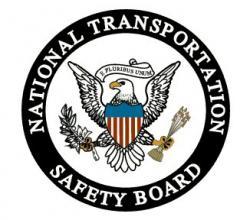Wed, Jun 10, 2009
Companies Disagree On Technology
 There's an old saying in aviation
that "a bird in the prop will cause the airplane to stop."
Bird strikes have always been a cause for concern in the aviation
industry, and one of the topics scheduled to be reviewed at this
week's NTSB hearing on US Airways Flight 1549 is developments in
technologies such as radar for bird tracking at airports.
There's an old saying in aviation
that "a bird in the prop will cause the airplane to stop."
Bird strikes have always been a cause for concern in the aviation
industry, and one of the topics scheduled to be reviewed at this
week's NTSB hearing on US Airways Flight 1549 is developments in
technologies such as radar for bird tracking at airports.
Industry reports progress with avian radar has been significant.
The FAA chose a Canadian Company’s Accipiter Avian Radar for
initial assessment of commercially available bird radar systems.
Dr. Tim J. Nohara, President of Accipiter Radar explains
“avian radar can help mitigate bird hazards where they are
most likely to occur around the airport. Realtime monitoring and
alerting of approaching flocks of birds helps wildlife control
personnel better manage bird hazards.”
In the case of Flight 1549 Dr. Nohara maintains “the
accident was unusual, happening at 2800 feet altitude and at quite
a distance beyond the airport. While the coverage versus accuracy
trade-off associated with today’s avian radars would have
been limiting for the 1549 accident, new antennas under development
... will soon provide improved 3D bird localization accuracy to
facilitate a warning to pilots even in this case.”
 But a second company, called DeTect
and based in Florida, has also called on the FAA to deploy avian
radar at airports around the country in light of this week's NTSB
hearings, and says no more study is needed. Gary W. Andrews, CEO of
DeTect, said in a statement "Our military already uses the
technology, NASA uses bird radars, it is time to let our commercial
airports use the systems. Ongoing statements by the FAA ... that
bird radars are not ready for operational use, will take years more
research and could not have prevented the US Airways birdstrike
related crash, simply are not correct. Bird radars currently
operating regularly detect and track flocks of geese at ranges far
beyond the 3 miles distance and 2800 feet altitude as was the flock
that brought down flight 1549. These systems are already being used
operationally to provide risk advisories to controllers and
pilots."
But a second company, called DeTect
and based in Florida, has also called on the FAA to deploy avian
radar at airports around the country in light of this week's NTSB
hearings, and says no more study is needed. Gary W. Andrews, CEO of
DeTect, said in a statement "Our military already uses the
technology, NASA uses bird radars, it is time to let our commercial
airports use the systems. Ongoing statements by the FAA ... that
bird radars are not ready for operational use, will take years more
research and could not have prevented the US Airways birdstrike
related crash, simply are not correct. Bird radars currently
operating regularly detect and track flocks of geese at ranges far
beyond the 3 miles distance and 2800 feet altitude as was the flock
that brought down flight 1549. These systems are already being used
operationally to provide risk advisories to controllers and
pilots."
Obviously, both of these companies would like to sell bird
detection equipment on a government contract. The NTSB hearing the
week will focus on a variety of issues relating to US Airways 1549.
ANN reported Tuesday that DNA testing showed that the geese that
caused the crash were migratory, which experts say require more
elaborate techniques in order to monitor bird movements.
More News
Pilot Also Reported That Due To A Fuel Leak, The Auxiliary Fuel Tanks Were Not Used On June 4, 2025, at 13:41 eastern daylight time, a Piper PA-23, N2109P, was substantially damage>[...]
From 2023 (YouTube Edition): Reflections on War’s Collective Lessons and Cyclical Nature The exigencies of war ought be colorblind. Inane social-constructs the likes of racis>[...]
Pilot Reported That He Was Unfamiliar With The Single Seat Amateur-Built Airplane And His Intent Was To Perform High-Speed Taxi Testing Analysis: The pilot reported that he was unf>[...]
From 2023 (YouTube Edition): First Kits to Ship October 2023 Having formerly resurrected the storied shape of the Ryan ST—in effigy, anyway—Montrose, Colorado-based Tim>[...]
Performance-Based Navigation (PBN) [ICAO] Area navigation based on performance requirements for aircraft operating along an ATS route, on an instrument approach procedure or in a d>[...]
 NTSB Prelim: Piper PA-23
NTSB Prelim: Piper PA-23 Classic Aero-TV: One Mans Vietnam
Classic Aero-TV: One Mans Vietnam NTSB Final Report: Capella Aircraft Corp FW1C50
NTSB Final Report: Capella Aircraft Corp FW1C50 Classic Aero-TV: Timber Tiger Touts Curtiss Jenny Replicas
Classic Aero-TV: Timber Tiger Touts Curtiss Jenny Replicas ANN's Daily Aero-Term (07.04.25): Performance-Based Navigation (PBN) [ICAO]
ANN's Daily Aero-Term (07.04.25): Performance-Based Navigation (PBN) [ICAO]




